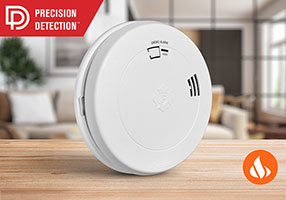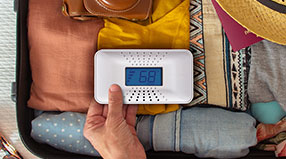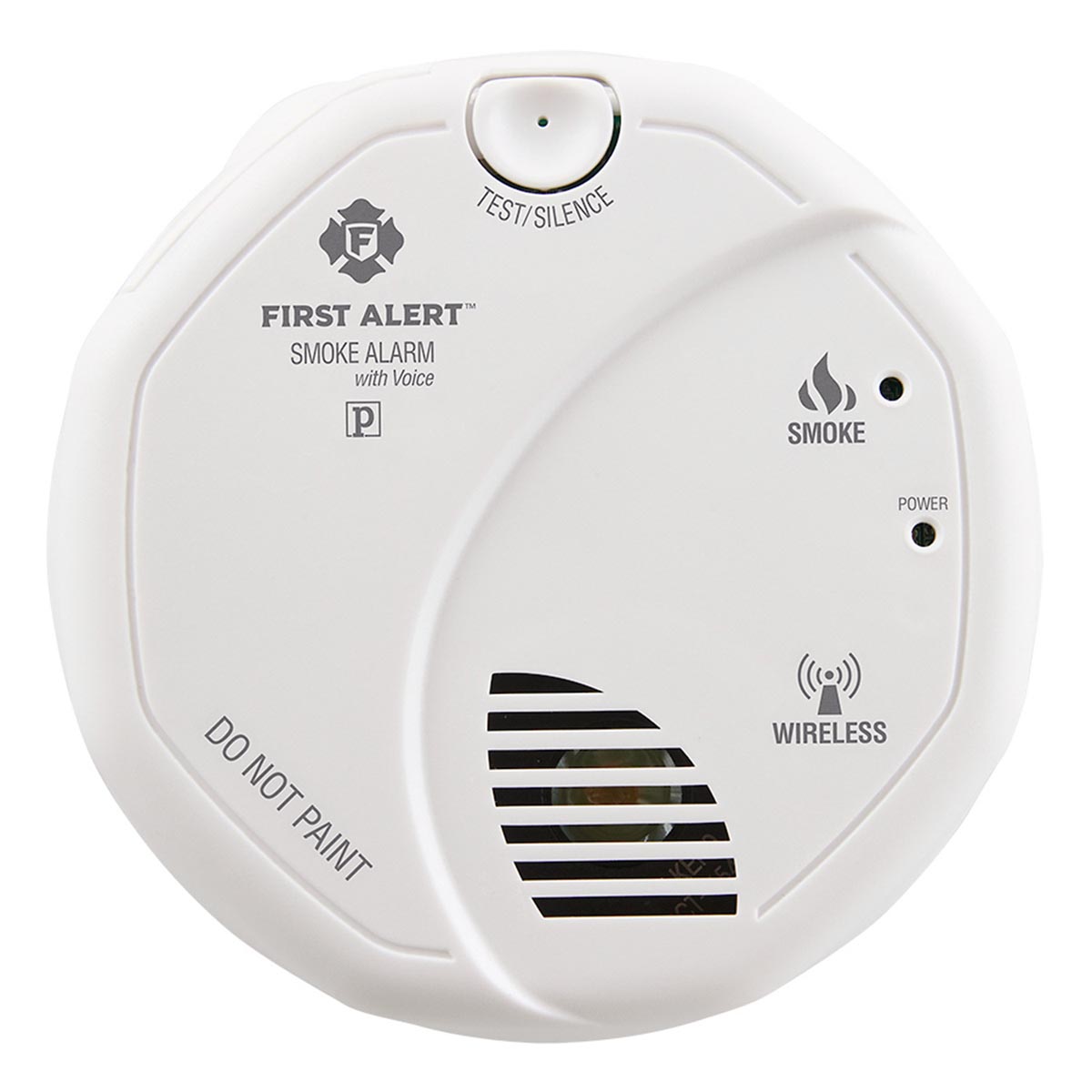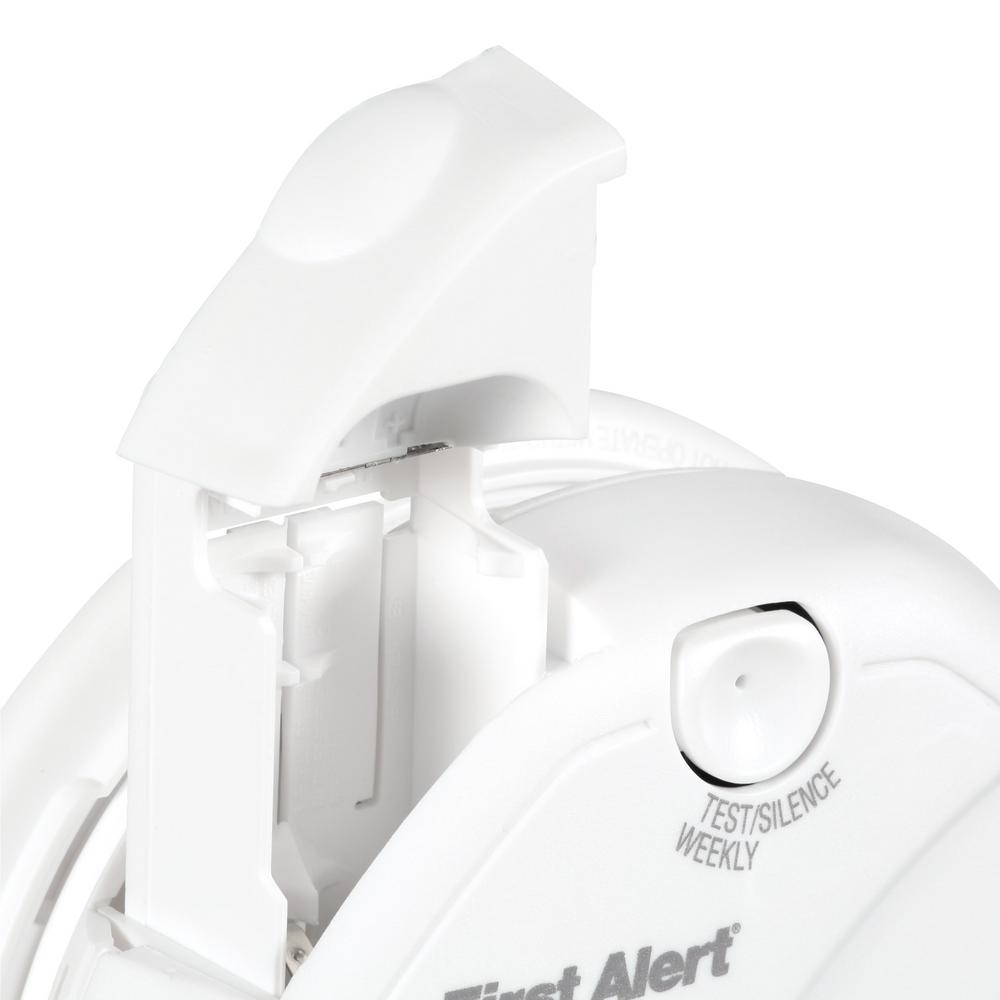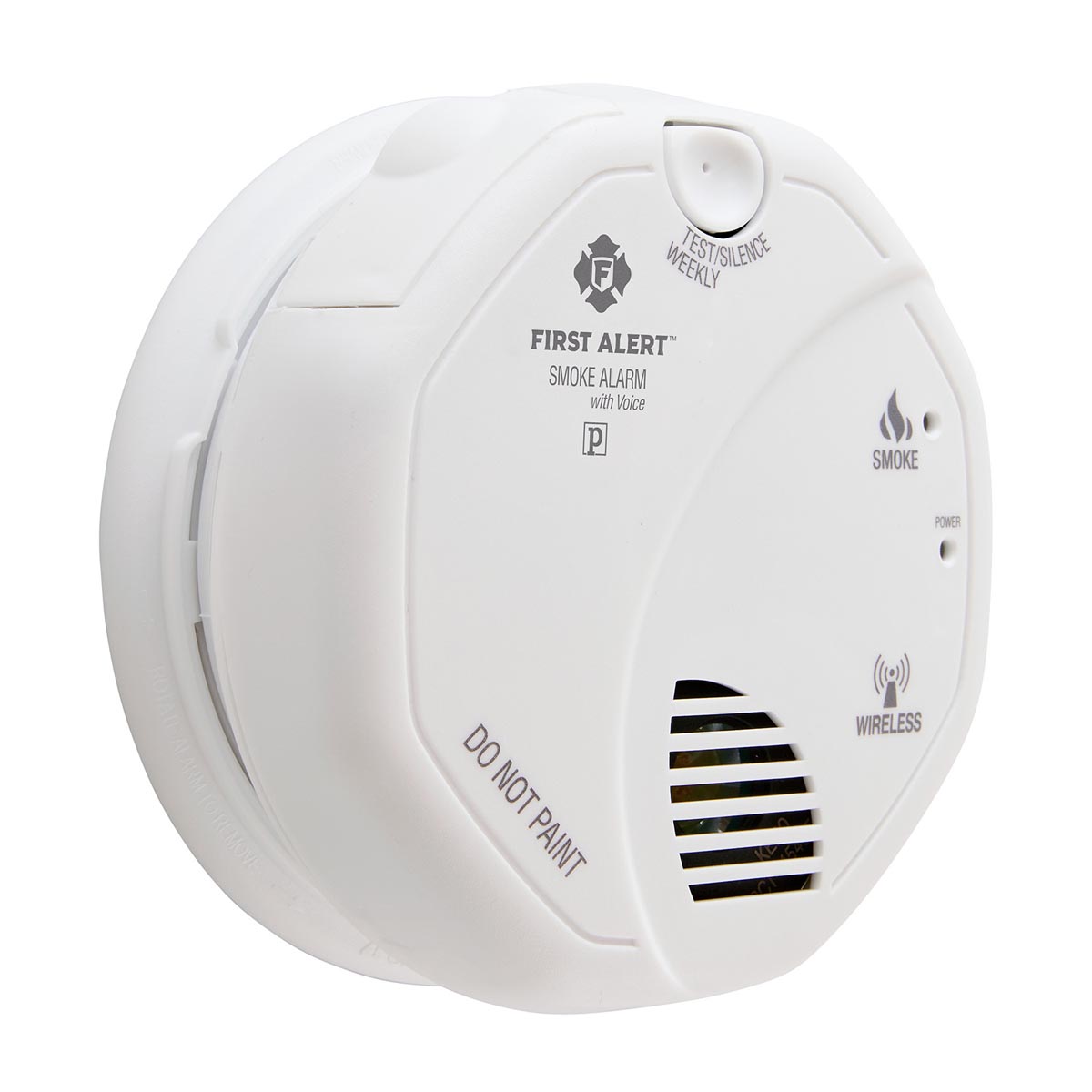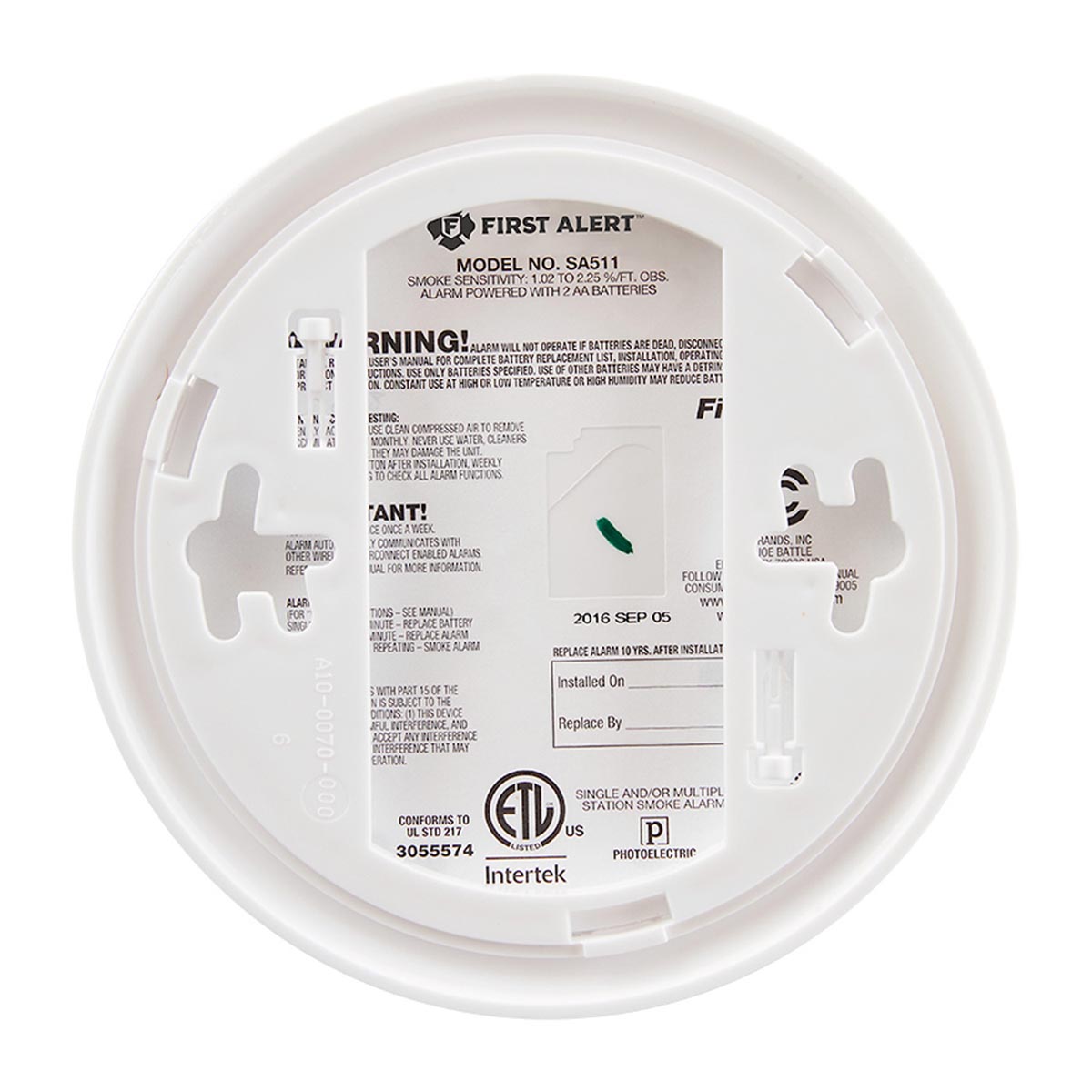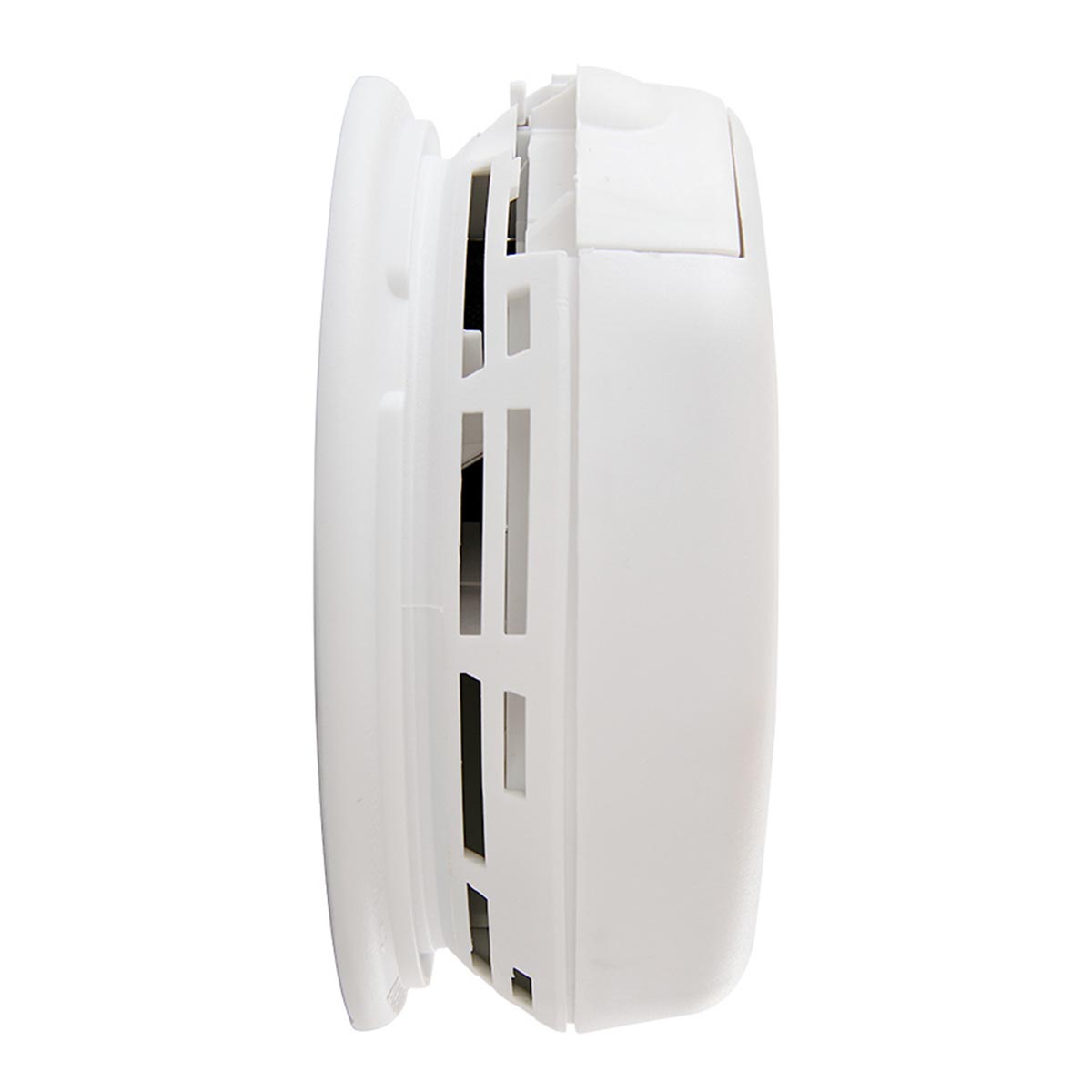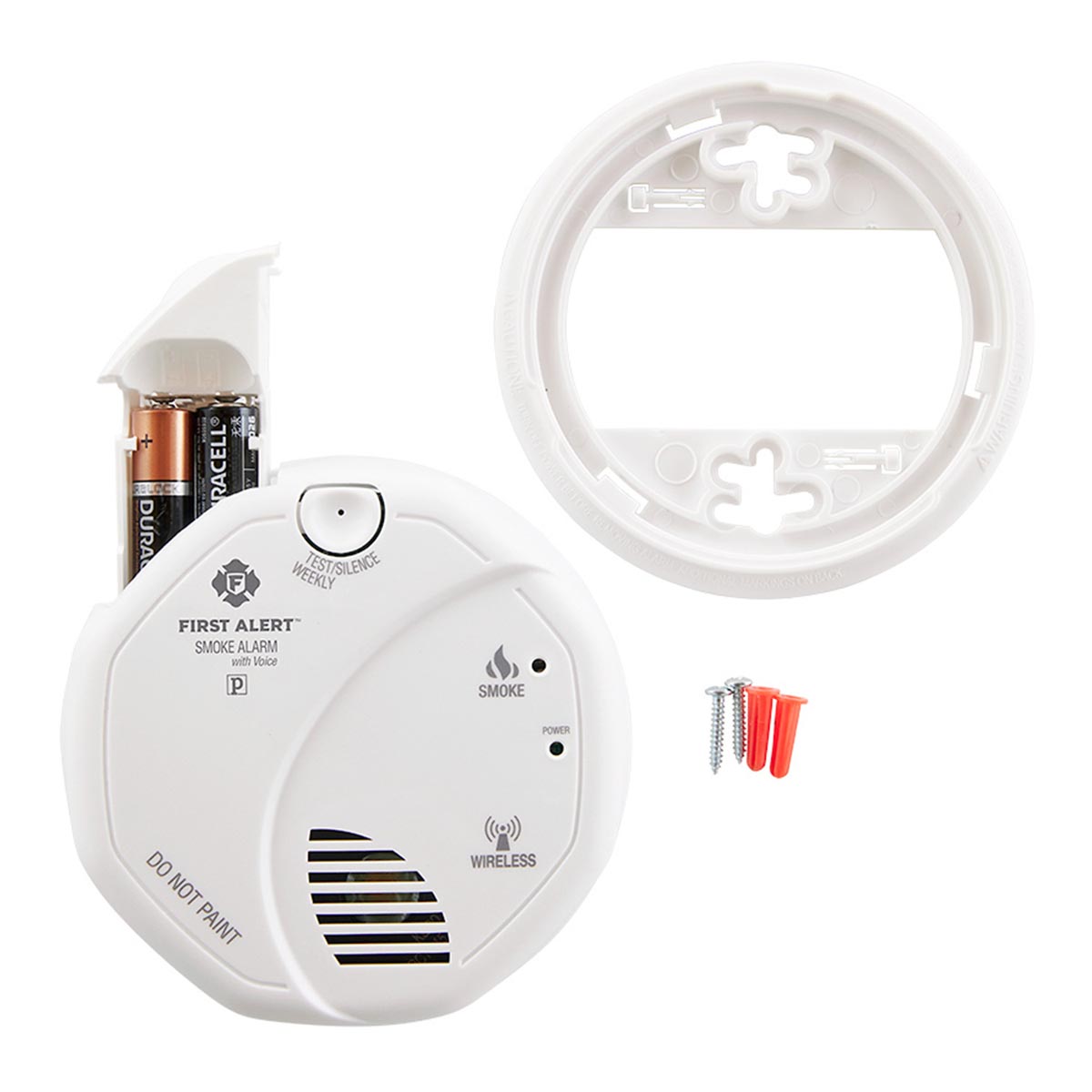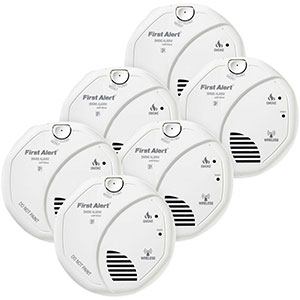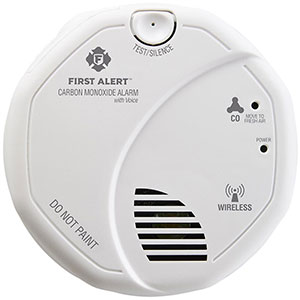First Alert Wireless Interconnect Battery Operated Smoke Alarm With Voice Location Twin Pack - SA511CN2-3ST
Wireless Interconnect Battery Operated Smoke Alarm w/ Voice - Twin Pack
First Alert's series of Wireless Battery Operated Smoke Alarms effectively eliminates the need for a wired connection and operates entirely on batteries. The latest advancement in a series celebrated for its intuitive use of technology, the First Alert Wireless Interconnect collection offers an abundance of options when it comes to creating the ideal safety network. Wireless inter-connectivity allows you to connect up to 18 alarms (a maximum of 12 smoke alarms and 6 carbon monoxide alarms) within your home! Should one First Alert Wireless Interconnect alarm sound off, the remainder of your Wireless Interconnect alarms will also trigger simultaneously and alert you and your home to any potential dangers. The communication distance (range) between any two First Alert Wireless Interconnect Alarms is typically 50 ft. (15 meters) inside of a home. Some features of a home, such as the number of floors, number/size of rooms, furniture and types of building materials used may reduce the range of wireless interconnect alarms. This feature allows for the maximum in whole home protection.
The realization of Photoelectric Smoke Sensing Technology will effectively reduce the number of nuisance alarms triggered by cooking smoke and shower steam. This alarm comes equipped with a Mute Button that serves the dual purpose of quickly silencing your alarm as well as testing its function. First Alert Wireless Interconnect Battery Operated Smoke Alarms also come equipped with an EZ access battery door that removes the hassle and burden of collecting your alarm from the ceiling and replacing its batteries. The combination of an optional theft-prevention lock and an increased emphasis on the unit's 85db sound output establishes peace of mind, while the inclusion of an anti-theft prevention lock all but guarantees the safest of experiences. This alarm comes with a 10-year limited warranty and meets UL217 Standards.
This Wireless Interconnect Alarm is for you if:
- You want to build a safety network of interconnected alarms in your home without the cost and hassle of wiring.
- You want voice notification of where the fire is located.
- You want an instructional DVD on the benefits of First Alert Wireless Interconnect Products.
Where To Place Smoke Alarms:
-
One in every bedroom, and at least one on every level of the home.
First Alert Wireless Interconnect Smoke Alarm w/ Voice Location Twin Pack can be preprogrammed with the following locations:
- Basement
- Kitchen
- Child’s Bedroom
- Living Room
- Dining Room
- Master Bedroom
- Family Room
- No Location
- Guest Bedroom
- Office
- Hallway
- Utility Room
First Alert Wireless Interconnect Battery Operated Smoke Alarm with Voice Location Twin Pack - SA511CN2-3ST
Actual battery service life depends on the particular design of your smoke or carbon monoxide alarm and the environment in which it is installed. All kinds of alarm batteries specified in the user's manual are acceptable replacement batteries. Regardless of the manufacturer's suggested battery life, you MUST replace the batteries immediately once the unit starts "chirping" (the "low battery warning"). It is recommended that you change the batteries in your alarms when you change your clocks for daylight saving time. Also consider replacing your current alarms with 10-Year Life Alarms that never require a costly battery replacement for the ten year life of the alarm. This 10-Year series is available in smoke, carbon monoxide and combination alarms.
Other reasons include: It could be a different device or appliance such as a security system, monitor, carbon monoxide alarm, or other device which has a similar low battery or alert signal. Some of the same factors that cause unwanted alarms can cause intermittent alarms: dust and insects in the alarm or power interruptions in hardwired alarms. Improper wiring on AC or AC/DC smoke alarms. AC alarms will chirp every 5 seconds if the interconnect wire is grounded. The orange interconnect wire should NEVER be grounded; it should only be used to interconnect other smoke alarms or compatible devices.
- You may not be holding the test button down long enough. Try holding it down for up to 10 seconds (20 seconds on photoelectric models) .
- Your battery may not be installed properly or snapped all the way in place. Even if the alarm sounded briefly when the battery touched the terminals, you still need to make sure it is snapped securely in place. If the battery is loose, in cannot power the smoke alarm properly. After installing new batteries, be sure to test your smoke detector.
- Your AC power may not be on. AC and AC/DC units will have a power indicator light (red or green) that shines continuously when they are receiving electrical power.
- If you have a 10-Year model, the smoke alarm may not have been properly activated. If the tab broke away before the alarm was activated, you can use a toothpick to move the switch over to test the alarm.
- There may be insufficient battery power, try new batteries.
- Problems with voltage or insufficient electrical power (brown out) may cause a continuous weak sounding alarm. For AC or AC/DC models, temporarily disconnect power at the service panel until the brown out is over. If you do not restore the AC power, your smoke alarms cannot warn you of a fire.
- Incompatible warning device. If an incompatible alarm or auxiliary device is linked into a series of AC or AC/DC smoke alarms it may cause the system inadvertently go off.
- It is possible that your smoke alarm "silence" button was pushed by mistake. The alarm will now "chirp" once a minute for up to 15 minutes before resetting.
- Are you sure it's the smoke alarm? Funny to ask, but other devices have similar low battery chirps or warning tones.
- Your "new" batteries may not be fresh. If batteries are stored, especially in cold areas like refrigerators, they lose their charge more quickly. Always check the freshness date on the package when buying new batteries. Keep plenty of replacement batteries on hand so that you are sure to always be protected by your smoke alarms.
If it's time to replace your alarms, consider the NEW 10-Year Life series and never have to worry about a battery replacement for the life of the alarm.10-Year alarms are available in smoke, carbon monoxide and combination alarms.
- Power Source: Battery Operated
- Battery Type: Two AA
- Sensor: Photoelectric
- Wireless Interconnect: Can be linked with up to 18 units (12 Smoke, 6 CO/Heat/Relay)
- Exclusive Voice Warning with Location: Will tell you the preprogrammed location of the initiating unit and danger detected
- Optipath 360° Technology: Patented technology provides 360° of direct access to the smoke sensor
- Smart Sensing Technology: Helps reduce nuisance alarms
- Spread Spectrum Horn Tone: Sweeps through the 2200 - 3400 Hz range
- Single Button: One press to silence and test alarm
- Perfect Mount: Mounting bracket keeps alarm secure over a wide rotation range to allow for perfect alignment
- Standards: UL 217, FCC compliant
- Warranty: 10 Year Limited
- Product Dimensions (LxWxH): 5.1 x 2.4 x 5.1.in.
- Product Weight: 1.8 lbs.
- Smoke particles of varying number and size are produced in all fires. For maximum protection, use both ionization and photoelectric sensing technologies. Ionization alarms are generally more sensitive to fast flaming fires and photoelectric alarms are generally more sensitive to smoldering fires.
If you are interested in ordering a large quantity of items you may qualify for volume pricing discounts. Volume Discount Pricing is a great way for customers to save big on large, bulk orders of most items available in our store. Please send a bulk order request to our friendly sales staff so they may create a quote and provide personal service for your order! You will receive a response within 1-2 business days and our office hours are Monday through Friday, 8am-5pm CST.
- Let us know what products & the quantities you are interested in.
- Get a detailed quote from a dedicated sales rep.
- Our warehouse ships directly to you.
- You enjoy the savings & are now a preferred customer.

First Alert Wireless Interconnected Battery Smoke Alarm with Voice, 2-Pack Reviews
Everything was sent in a timely manner, and everything works as expected. Thank you very much for a fine product.
The First Alert Wireless Interconnect Battery Operated Smoke Alarm With Voice Location is one of the best smoke detectors I've ever owned. The fact that they are interconnected via Bluetooth, and have voice location so you know which detector sensed smoke, makes them one of the safest and best smoke detector you can buy. The process of linking all of my detectors together was simple. This detector is a must if you want to protect your family and make your home safe from the horror of a home fire.
We've been installing these in houses we rent, and this past December one of our tenants awoke in the middle of the night to these smoke alarms all going off at once. Long story short, our tenant made it out of the house in time. These worked as described when it mattered.
So far so good. Hopefully never sound off for real. Testing worked as advertised.
Works as advertised. Shipped as promised.
docs are weak. need to explain better how the locations are configured. product works well after setup is performed
Smoke detectors were delivered quickly and installed easily. Programming them to communicate with the Smoke/CO detectors was straight forward and worked perfectly! Very pleased!
This product installation is quick and easy. The set up is very labor efficient. This product is quick to respond and very audible. You will be notified immediately. Communication with the other smokes and carbons is great.
Just installed 6 of the First Alert Wireless Interconnect Smoke Alarms. Tested them and they work great. When one alarm is triggered, they all start sounding.
Same as above,good quality and haven't had hardly any problems.

